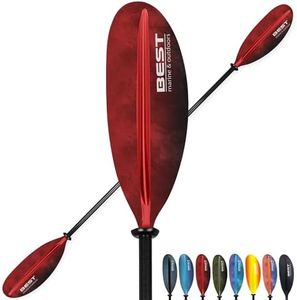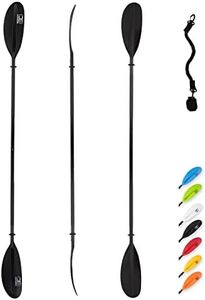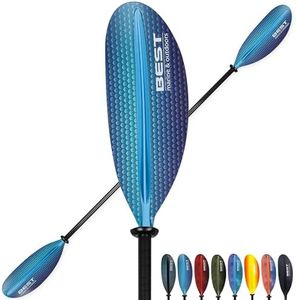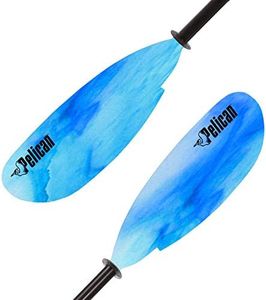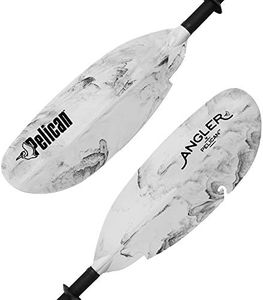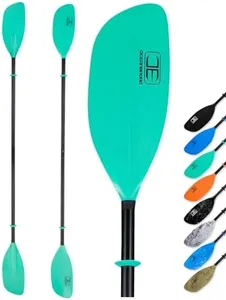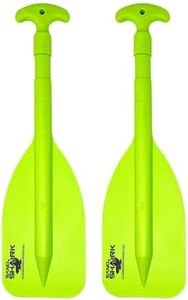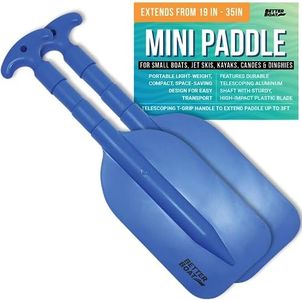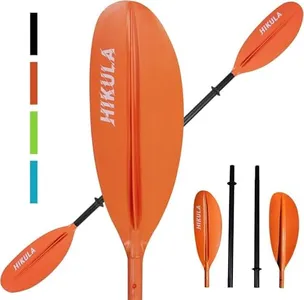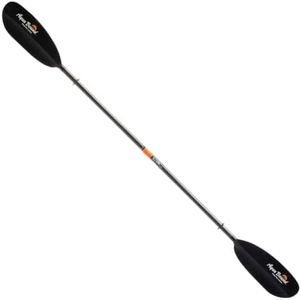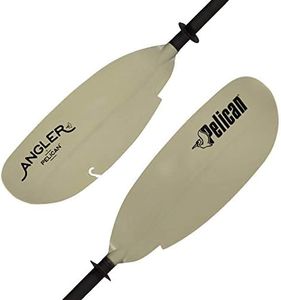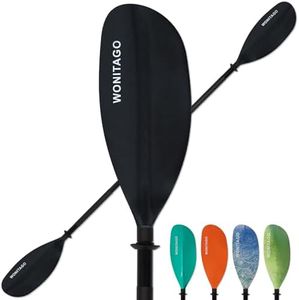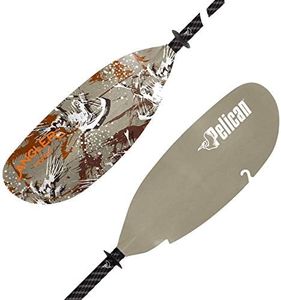10 Best Kayak Paddles 2025 in the United States
Our technology thoroughly searches through the online shopping world, reviewing hundreds of sites. We then process and analyze this information, updating in real-time to bring you the latest top-rated products. This way, you always get the best and most current options available.

Our Top Picks
Winner
OCEANBROAD Kayak Paddle 90.5in/230cm Alloy Shaft Kayaking Boating Canoeing Oar with Paddle Leash 1 Paddle, Black
Most important from
7236 reviews
The OCEANBROAD Kayak Paddle, at 90.5 inches (230 cm) in length, is a solid choice for both beginner and intermediate paddlers. Its moderate length makes it versatile for different users and easy to handle. The paddle features a high-quality aluminum alloy shaft, which is durable and lightweight, complemented by fiberglass-reinforced polypropylene (PP) blades that provide a good balance of toughness and rigidity. These materials ensure the paddle is long-lasting while still being affordable.
The shaft’s PE tube cover enhances grip and comfort, reducing the risk of blisters and lessening the cold feel of the metal during cooler weather. This paddle is user-friendly, with a detachable design for easy storage and transport. It also includes practical features such as a bungee paddle leash for securing the paddle to the kayak, three angle locking positions for feathering adjustments, and drip rings to help keep your hands dry.
While the aluminum shaft is sturdy, it may not offer the same performance as higher-end materials like carbon fiber. The paddle's weight, at around 1.13 kilograms, is a bit heavier compared to some advanced options, which might be a consideration for extended use. Nevertheless, this paddle is an excellent fit for recreational kayakers looking for a reliable and cost-effective option.
Most important from
7236 reviews
Best Marine and Outdoors Kayak Paddle, Carbon Fiber Shaft & Fiberglass Reinforced Polypropylene Blades, 220cm, 234cm, 250cm, Lightweight Kayak Paddles for Adults (Blue Prism, 220 CM)
Most important from
1275 reviews
The Best Marine and Outdoors Kayak Paddle is designed to meet the needs of a wide range of paddlers, particularly recreational kayakers and those who enjoy fishing from their kayaks. One of the standout features is its lightweight design, weighing only 30-32 ounces, which makes it easier to handle during long paddling sessions, reducing strain on your arms and shoulders. The carbon fiber shaft adds to the durability and performance, surpassing traditional materials like aluminum and fiberglass. The paddle separates into two pieces for easy transport and storage, a practical feature for those looking to save space.
In terms of versatility, this paddle offers adjustable blade angles that can be feathered in 60-degree increments, allowing paddlers to customize their experience based on conditions or personal preference. The blade size (18 in x 6.75 in) is suitable for a variety of paddling styles, making it a good choice for casual outings or more intense kayaking adventures.
There are a few considerations to keep in mind. While the paddle is lightweight, some users may find that a very lightweight paddle can sacrifice sturdiness, especially if used in rougher conditions. Additionally, its price point may be higher compared to entry-level paddles, which could deter beginners who are just starting out and might not yet appreciate the benefits of premium materials.
Most important from
1275 reviews
Buying Guide for the Best Kayak Paddles
Choosing the right kayak paddle is crucial for an enjoyable and efficient kayaking experience. The right paddle can make a significant difference in your comfort, speed, and overall performance on the water. When selecting a kayak paddle, consider factors such as your paddling style, the type of kayaking you plan to do, and your physical characteristics. Here are some key specifications to help you make an informed decision.FAQ
Most Popular Categories Right Now
